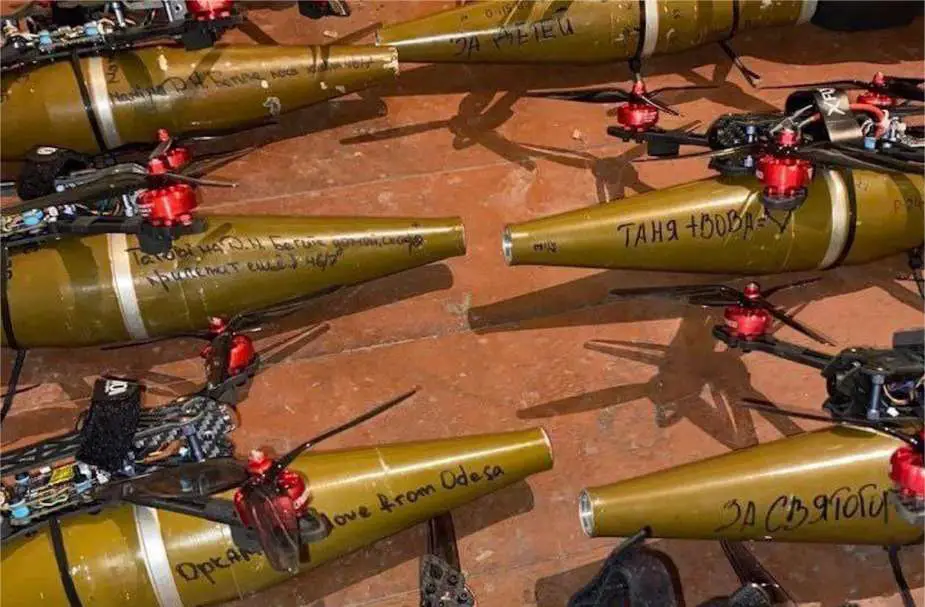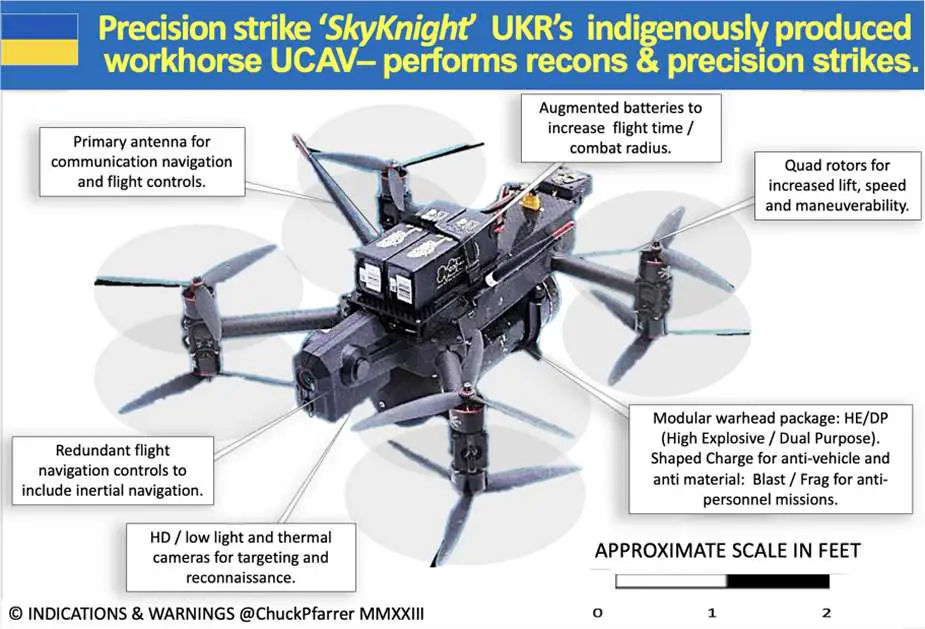- Army
- Conflicts in the world
- Israel - Iran conflict 2025
- Pakistan - India Conflict 2025
- Russia Ukraine War 2022
- Libya conflict day by day
- HAMAS - Israel War 2023
- Operation Serval in Mali French Army
- Sangaris operation Central African Republic
- Sangaris opération militaire République Centreafrique
- Ukraine - Russia conflict
- Syria conflict news
- Defence & Security Industry Technology
- Armies in the world
- Analysis Defense and Security Industry
- Conflicts in the world
- Navy
- Air
How Ukraine's cheap FPV drones are used on the Ukrainian battlefield
On October 3, 2023, as reported by Chuck Pfarrer, Ukraine reportedly employed another affordable FPV drone to target and destroy a Russian military asset, specifically a BM-21 Grad rocket launcher. Modern warfare is currently undergoing a substantial transformation, exemplified by the ongoing conflict in Ukraine, as the Ukrainian military has effectively incorporated First Person View (FPV) kamikaze drones into their operations. This strategic shift carries significant implications for military strategy, technological advancements, and new challenges on the battlefield, as evidenced by numerous articles on our website.
Follow Army Recognition on Google News at this link

Ukrainian small civilian-grade FPV drones armed with RPG rockets (Picture source: Yandex)
One of the notable advantages of FPV drones is their cost-effectiveness in engaging a wide range of targets, including tanks, armored vehicles, aircraft, and naval assets, some of which are valued at tens of millions of dollars. Civilian-grade FPV drones, typically priced between $500 and $1,000, can be equipped with basic munitions such as RPG-7 rockets, which cost between $100 to $500 each. Medium-sized drones, like the Russian Lancet, come at a relatively affordable cost of approximately 3 million roubles, equivalent to around $35,000. Even heavier drones armed with advanced missiles like the UK's Hydra 400 remain cost-effective when compared to the high price tag of advanced attack helicopters like the Russian Ka-52, which can exceed $16 million.
The affordability of FPV drones has facilitated their widespread deployment within the Ukrainian military, significantly enhancing operational efficiency. Throughout the conflict, Ukraine has witnessed remarkable growth in its drone manufacturing sector, and this movement is also reflected on a global scale. Just a year ago, the nation had seven drone manufacturers, but today, the number has surged to a minimum of 80 companies engaged in drone production. Mykhailo Fedorov, Ukraine's Minister of Digital Transformation, has reported a staggering 100-fold increase in production in 2023 compared to the previous year (2022), with projections indicating that production levels in 2023 may reach 120 to 140 times higher than those in 2022.
These drones encompass Unmanned Surface Vehicles (USVs), Unmanned Aircraft Vehicles (UAVs), and Unmanned Ground Vehicles (UGVs), serving a wide array of military applications, from surveillance to precision strikes. Notably, Ukraine has broadened its focus to include the manufacture of more advanced UAVs with extended flight times, capabilities for high-altitude operations, and basic artificial intelligence functionalities.
The deployment of high-flying "repeater" drones and additional batteries has extended the signal reach between kamikaze drones and their operators. This extension increases both the operational range and mission duration, allowing the Ukrainian Armed Forces to position even a low-cost kamikaze drone within a 10 to 20 km radius behind the Russian front lines. This presence can have a significant impact on enemy troop morale, potentially disrupting their formations and decision-making processes. Reconnaissance teams utilize these drones to monitor terrain, pinpoint Russian reinforcements, and transmit their coordinates to artillery or HIMARS teams, who can promptly launch attacks to weaken enemy forces before they enter the operation zone.
In response to the threat posed by Ukrainian kamikaze drones, Russian forces have employed a range of countermeasures. These include the deployment of jamming stations (such as the Volnorez system on their latest T-80BVM Model 2023 tank), multi-functional jamming systems like Borisoglebsk-2 and Murmansk-BN, and the use of grilles, 'drone nets,' and mock-ups to intercept these quadcopters before they can target real military assets. Reports have also indicated the development of anti-drone rifles, similar to the Serbian Drone Off jamming rifle, as part of efforts to counter FPV drones effectively.
Despite their effectiveness, several challenges persist in the extended use of FPV drones by Ukraine. These include a persistent shortage of drones, which has led to crowdfunding campaigns to finance the acquisition of additional units. Local terrain conditions can also impact the clarity of signals between the drone and the operator, necessitating meticulous mission planning to ensure effective communication and control. The allocation of limited resources presents a dilemma for commanders of the front units, who must carefully weigh the choice between acquiring pickup trucks or drones for reconnaissance missions.

The SkyKnight FPV drone is an example of a multi-tasking drone used by Ukraine (Picture source: Chuck Pfarrer/Twitter)


























